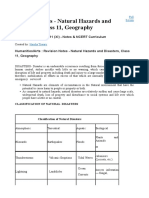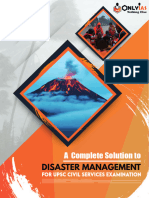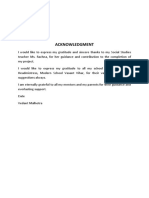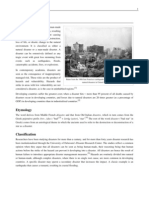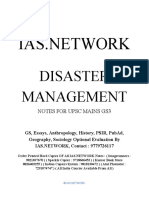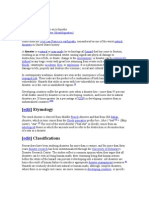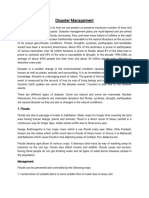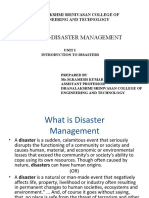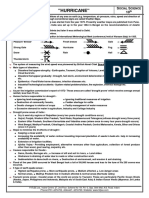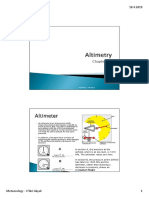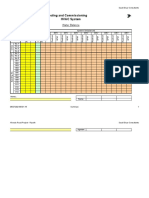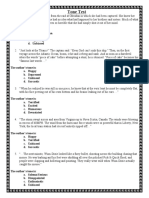0% found this document useful (0 votes)
64 views10 pagesChapter-7 Natural Hazards and Disasters: Causes, Consequences and Management
This document discusses natural hazards and disasters, including their causes and management. It covers various natural hazards like floods, droughts, earthquakes, tsunamis and cyclones. It defines disasters and classifies them into natural and man-made types. It discusses the Yokohama Strategy and International Decade for Natural Disaster Reduction that were established to help minimize loss from natural disasters. It also provides tables listing some major natural disasters since 1948 and classifications of natural disasters. Finally, it discusses reasons for more frequent natural disasters in India and analyzes earthquake zones in the country.
Uploaded by
Ajay JangraCopyright
© © All Rights Reserved
We take content rights seriously. If you suspect this is your content, claim it here.
Available Formats
Download as PDF, TXT or read online on Scribd
0% found this document useful (0 votes)
64 views10 pagesChapter-7 Natural Hazards and Disasters: Causes, Consequences and Management
This document discusses natural hazards and disasters, including their causes and management. It covers various natural hazards like floods, droughts, earthquakes, tsunamis and cyclones. It defines disasters and classifies them into natural and man-made types. It discusses the Yokohama Strategy and International Decade for Natural Disaster Reduction that were established to help minimize loss from natural disasters. It also provides tables listing some major natural disasters since 1948 and classifications of natural disasters. Finally, it discusses reasons for more frequent natural disasters in India and analyzes earthquake zones in the country.
Uploaded by
Ajay JangraCopyright
© © All Rights Reserved
We take content rights seriously. If you suspect this is your content, claim it here.
Available Formats
Download as PDF, TXT or read online on Scribd
/ 10












